- November 18, 2022
The chatter in machining occurs in almost all manufacturing processes. The heavy machines used in manufacturing generate a high amount of vibration, resulting in poor surface finish and a decline in dimensional accuracy.
Machinists must deal with this undesired vibration in different processes like CNC turning, milling, or drilling. However, understanding machining chatter and its causes and knowing how to avoid it would be helpful as it helps to prevent downtime, which is terrible for businesses.
This article discusses the chattering definition, types of chattering, its consequences, and how to avoid it.
What is Chatter in Machining?
Chattering in machining is the unwanted vibration that occurs when cutting or drilling parts. The chatter is due to the vibration imbalance of the workpiece and tool repeatedly moving relative to each other. The vibration occurs when the machined part and the cutting tool move in opposite directions, causing the machining tool’s varying cutting load per rotation.
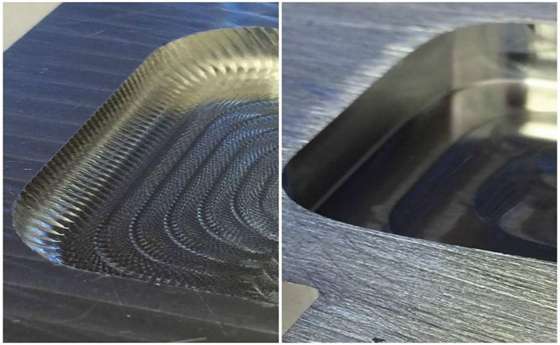
This may be due to improper design for manufacturing or inadequate tooling. The chattering usually produces loud noises and visible waviness on the surface of the machined components. Machining chatter is in two forms, namely:
- Resonate vibration
- Non-resonate vibration
Non-resonate vibration occurs as a result of using unequally worn tools on workpieces. This vibration is often constant throughout the machining cycle and due to mechanical causes that are easy to examine.
On the other hand, resonate vibration occurs at specific stages in the tool path, like machining concave corners.
Types of Chatter in Machining
There are two major types of chatter that you can encounter in CNC machining. They include the following:
Tool Chatter
Generally, CNC milling cutters vibrate during cutting operations. They begin trimming while transferring the vibration to the workpiece they add various features. As a result, the tool and the workpiece begin to slip against each other, causing the chatter to increase significantly.
Workpiece Chatter
Sometimes, when you fix the workpiece on the milling machine’s worktable incorrectly, it may result in some offsets and vibrations. Consequentially, the workpiece’s thin wall may begin to vibrate while it transfers to the cutting tool.
It is important to note that some chatters are often unavoidable. If the vibration that occurs during machining is more than 100µm, your workpiece may suffer scratches on the surface. However, it would be best if you considered doing something about the tool and workpiece chatter for the quality of your product. We will discuss how to avoid chatter below.
What are the Consequences of Chatter in Machining?
Machining chatter, if left uncontrolled, can result in various detrimental effects, such as lowering machining efficiency. Here are some of them:
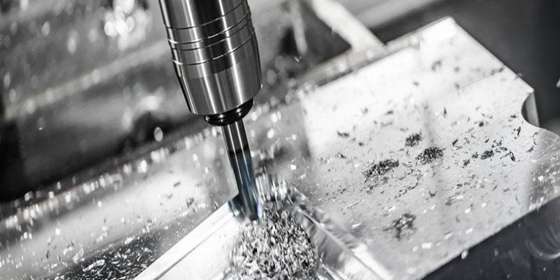
Reduced Tool Life
Cutting tools cannot handle the vibrating impacts of the tools chattering against the workpieces. These jarring effects can chip and blunt the cutting tool, damaging the surface quality of the cut parts. Also, it reduces the tool life and cutting efficiency, and the tooling replacement is expensive.
Reduced Machine life
The machine tool used in different machining components comprises various parts such that when there is vibration, these components vibrate at the same frequency. The spindle and other essential members producing the different axes of motion may begin to wear out faster than supposed. As a result, machine chatter puts machine components under undue stress, and if left unchecked, it can reduce machining efficiency and cause downtime.
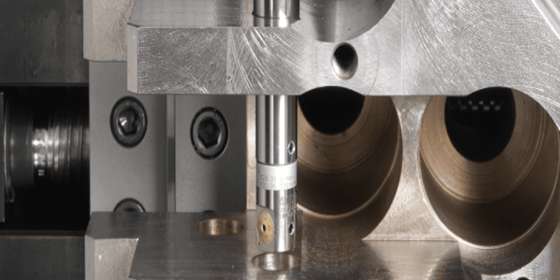
Poor Surface Finish
Chattering in machining affects the workpiece’s aesthetic properties and can diminish its tolerances in extreme situations. One of the most apparent consequences of machine chatter is poor surface roughness. The chattering causes visible waviness on the surface, which compromises the quality and durability of the part.
Reduced Dimensional Accuracy
When a cutting tool chatter during CNC machining, it derails from its CAM-initiated path. This deviation, however, can cause the parts to have ill-fitting. These parts may be too tight, too long, too short, or too loose due to inaccurate dimensions.
How to Avoid or Minimize Chatter in Machining?
Manufacturing companies employ different methods to minimize the chatter in machining operations and ensure that both workpieces and cutting tools are in good condition. Here are some of these steps on how to reduce chatter during CNC machining:
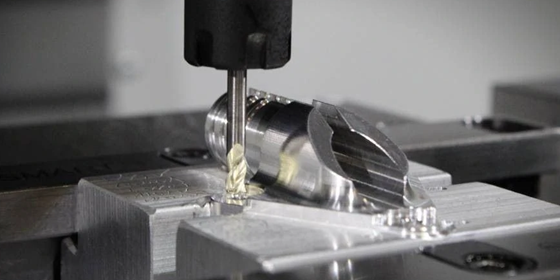
Optimize Machining Strategy
The degree of cutter engaging the workpiece varies with conventional milling. Excess force is regularly exerted on the milling cutter as it moves along the path. Therefore, the best way to reduce the chatter is to attain a regular engagement toolpath. You can reduce the depth of the cut as an alternative.
Also, try to reconsider the configuration of the spindle. For instance, if resonate chatter is the cause of the machining vibration, increase or reduce the machine’s RPM by 5%, and it will minimize the resonance vibrations occurring. Note that some CAM software has features that allow you to vary spindle speeds consistently. Most manufacturers adopt this feature due to its versatility.
Adopt the Right Work Holding
Balanced machine tools feature better adjustment. Several factors, such as incorrect positions and fixings, are the leading causes of chattering in CNC machining. However, the tool holder with end face and tape contact helps to ensure maximum rigidity during machining. As a result, the surface quality of components is not compromised at the lowest RPM.
You also need to check whether the machinist vice, vacuum table, chuck, or other workholding device applies adequate pressure to the workpiece to keep it firm and stationed.
When considering employing jigs and fixtures to exert clamping pressure as required, however, do not clamp only one end of an extended, thin workpiece. It is rather difficult for thin-walled parts to absorb shock. As a result, filler materials enhance their overall stiffness and reduce chattering. A tailstock or similar form of stable rest frame is an ideal option for such components.
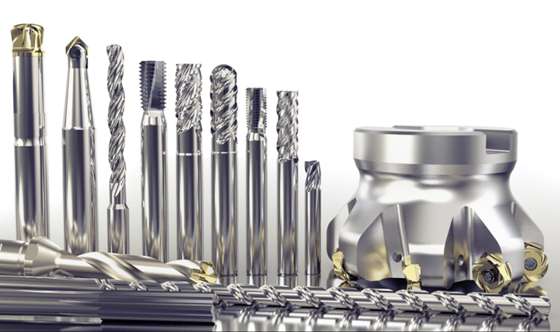
Use the Right Cutting Tool
Using the right cutting tool helps to avoid machining vibration. Some cutting tools generate more vibrations than others. It isn’t easy to eliminate tool chatter as that of a workpiece. As a result, you should consider the following factors in any tool of choice:
- Coating of a tool
- Correct substrate geometry
- The aspect ratio of a tool
Machinists and engineers often utilize the largest machine tool that fits well if it meets the technical specifications. The more solid a cutter is, the less it is likely to chatter. Long or thin tools often deflect. Hence, consider choosing shorter tools with the largest diameter.
However, combining various tools with varying groove shapes is the most effective way of minimizing chatter in machining. Additionally, consider reducing the tools protruding from the holder and fixing them tightly. Machine chatter is less likely to occur after doing this.
Ensure that your cutters have sharp blades that minimize the cutting force of CNC milling machines. You should always consider the stability of the processing environment and prompt maintenance of the cutter. Likewise, it is crucial to apply proper and consistent tool pressure so that the chip load is regular.
Determine the Ideal Tool Path
CNC milling operations are of two types – upward milling and downward milling. If you exert the cutting force in the same direction as the clamping direction, it can reduce the chattering of bent parts. It is often an essential aspect of cutting that needs consideration.
Generally, CNC mills have pre-installed ball screws which aid the efficiency and precision of CNC machine technology. As a result, you can employ a vertical machining center to prevent chattering during the cutting process.
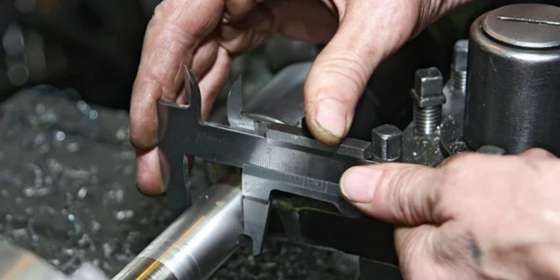
Machine Setting and Maintenance
As expected, your CNC machine should be installed on a concrete floor without any cracks, deformities, or discontinuities. You should know that the arrangement of your machine plays a crucial role in minimizing the chattering that occurs during machining.
It is because elastic, soft, or damaged flow may increase the trembling of a CNC entity. Therefore, you should consider utilizing anchors and adjusting feet to keep the CNC unit firm and steady to minimize chatter.
WayKen Helps Provide Effective Machining Solutions
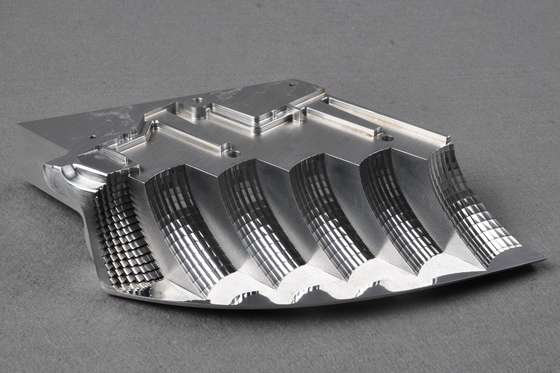
It is always difficult to avoid various small problems in machining operations, such as chatter, which can affect the final result. That’s when you need to have a CNC machining expert to help you deal with it.
At WayKen, with over 20 years of machining experience, our machinists are ready to respond and solve any machining challenges. From simple to complex shaped parts, we are always able to provide effective machining solutions in a cost-effective manner. As a result, you can be confident that you will get the product you want. Just upload your CAD file today and get a free quote and DfM feedback.
Conclusion
Chattering is a machining effect that causes a substantial decline in productivity. It affects machine performance, workpiece quality, cutting tool, and machine tool life. Various factors contribute to its occurrence ranging from where the machine is installed to the toolpath.
However, whenever you experience severe vibration, inspect the occurrence thoroughly. Ensure that the tool and the workpiece are held correctly and the configured machining options are correct to mitigate this chattering efficiently.
FAQs
What are chatter marks in machining?
Chatter marks are irregular surface defects left by a wheel that is out of turn in grinding or regular mark formed when turning a long workpiece on a lathe due to machining vibration.
What causes chatter in machining operations?
The cutting forces created during the cut will increase significantly if your machine tool has excessive wear. Increased cutting force usually results in chatter while cutting rigid substrate.
What causes vibration in rotating equipment?
The most common causes of chattering or vibration in rotating equipment include misalignment, imbalance, wear, and looseness. The imbalance of a heavy region within a rotating component will result in vibration when the unbalanced weight sins around the machine’s axis, generating a centralized force.
How can I identify chatter in machining?
CNC machine chatter is usually audible. Hence, an experienced machine operator can successfully identify when chatter occurs using its distinctive sound. Also, machining chatter makes visible wave marks on the surface of a workpiece.





